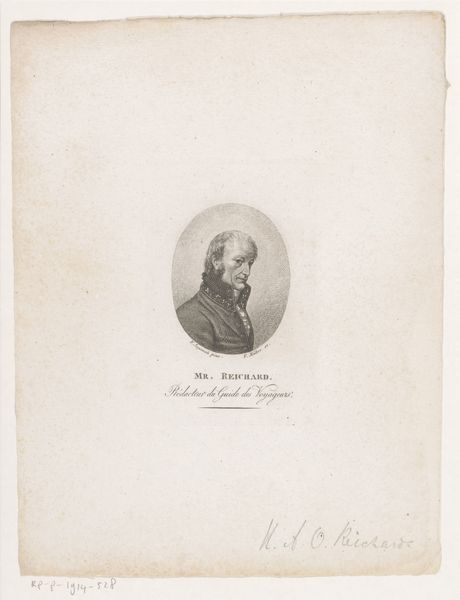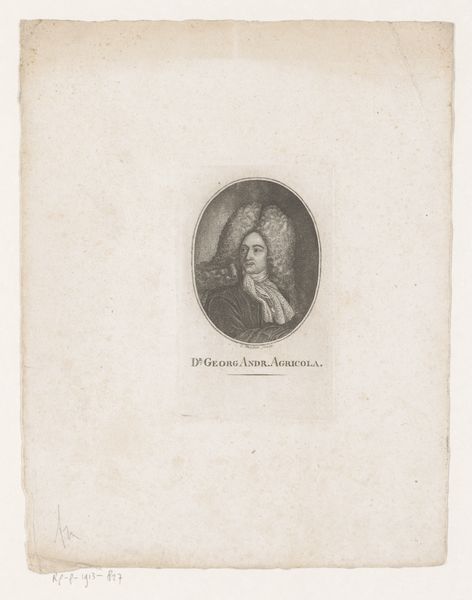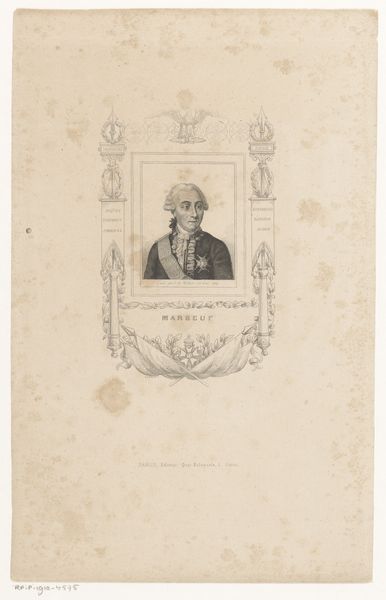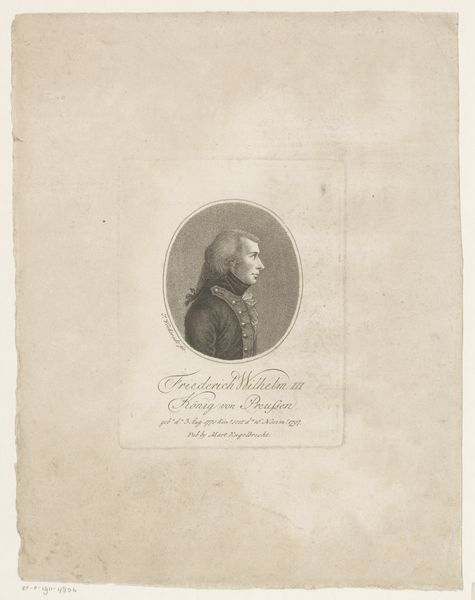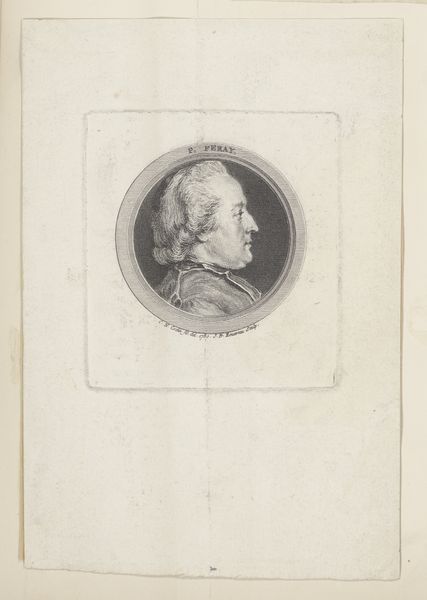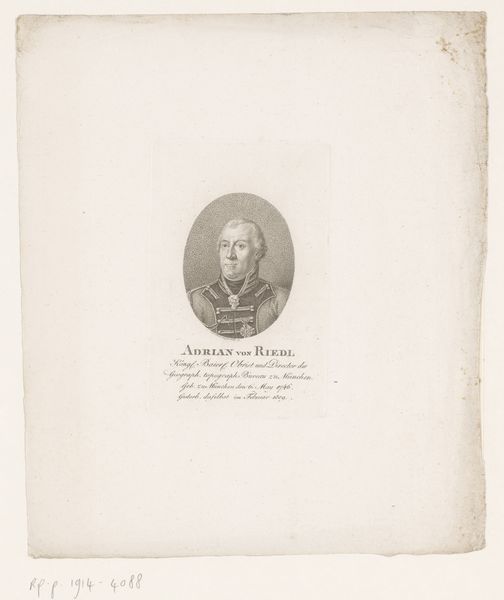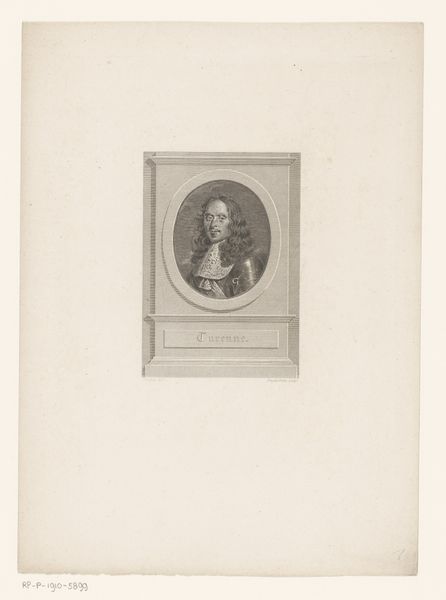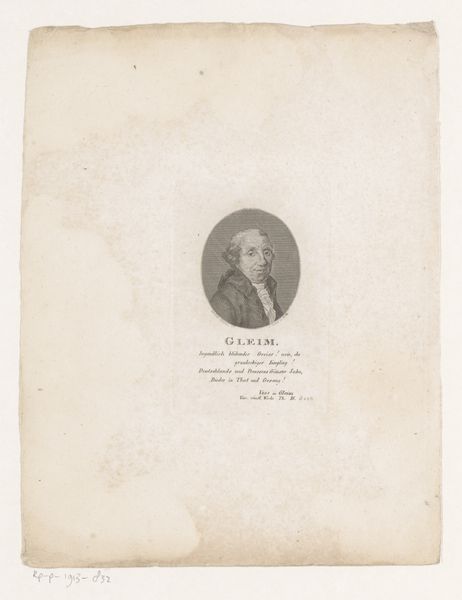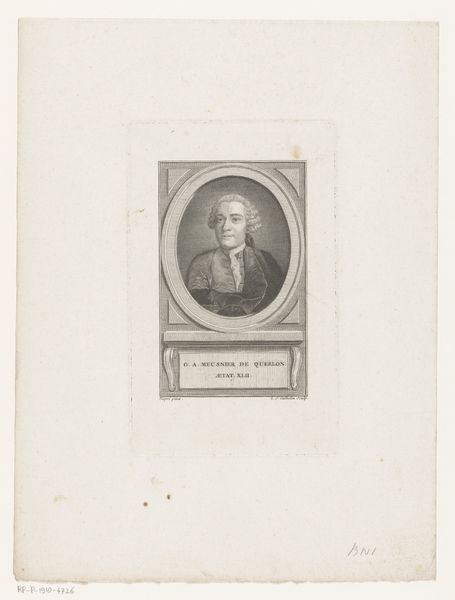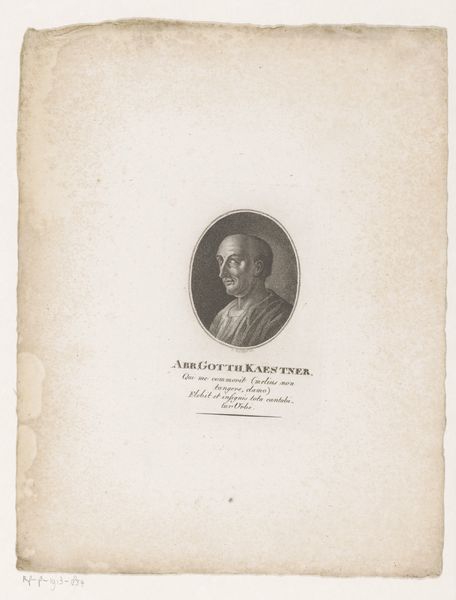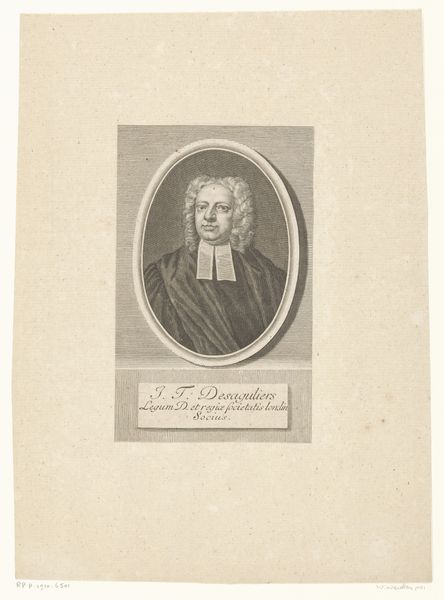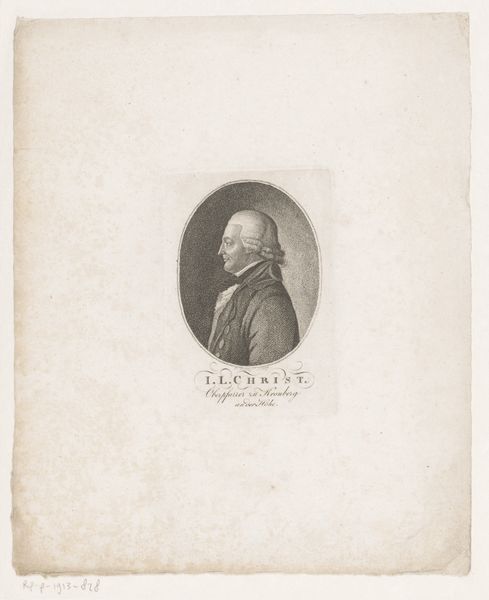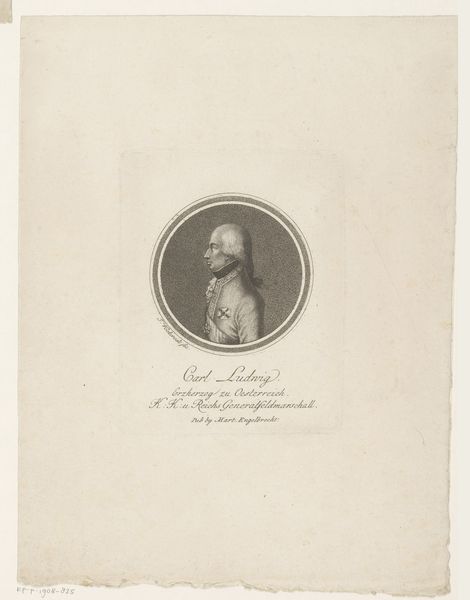
print, paper, engraving
#
portrait
#
neoclacissism
# print
#
old engraving style
#
white palette
#
paper
#
engraving
#
monochrome
Dimensions: height 144 mm, width 84 mm
Copyright: Rijks Museum: Open Domain
Curator: This is a portrait of Daniel Friedrich Sotzmann, created sometime between 1775 and 1834. The artist used engraving on paper to achieve this likeness. Editor: My first impression is of something delicate. It feels very precise and somewhat formal, given the monochrome palette. There is something almost ghostly to it too. Curator: Interesting observation. Engravings like this involved meticulous labor. Think of the engraver, carefully scoring the metal plate, creating tiny lines to form the image, and then the paper used in production, its weave, texture, and how the ink settles in, all are vital components. Editor: Absolutely. And the subject, Sotzmann, a figure embedded in his time, literally named below in elegant typography; "Depart u. Geograph," locating him professionally, in the Geography Department. It’s impossible to ignore the context of empire and exploration linked to geography during that era. The way he is depicted tells a story of power and societal standing too. Curator: It speaks to the evolving printing processes, as engraving allowed for the wider distribution of images. Each print functions as a matrix capable of replication and dispersal into new locations. This would influence cultural consumption patterns and ideas. Editor: Indeed, consider the act of portraiture itself at that moment, becoming more democratized through such techniques. How does this affect understandings of identity? Curator: That's perceptive. And it speaks to accessibility and how visual culture permeates even in realms previously limited to wealthier echelons of society. Editor: The gaze and pose construct identity and power; Sotzmann's portrait becomes both a record and a statement embedded within a system of social signification. Curator: Considering how widely prints could circulate and to what extent they contributed towards forging our own assumptions about labor, production and its byproducts is invaluable when standing before the art itself. Editor: Exploring those interwoven political and cultural strands is something I am constantly driven to pursue.
Comments
No comments
Be the first to comment and join the conversation on the ultimate creative platform.
